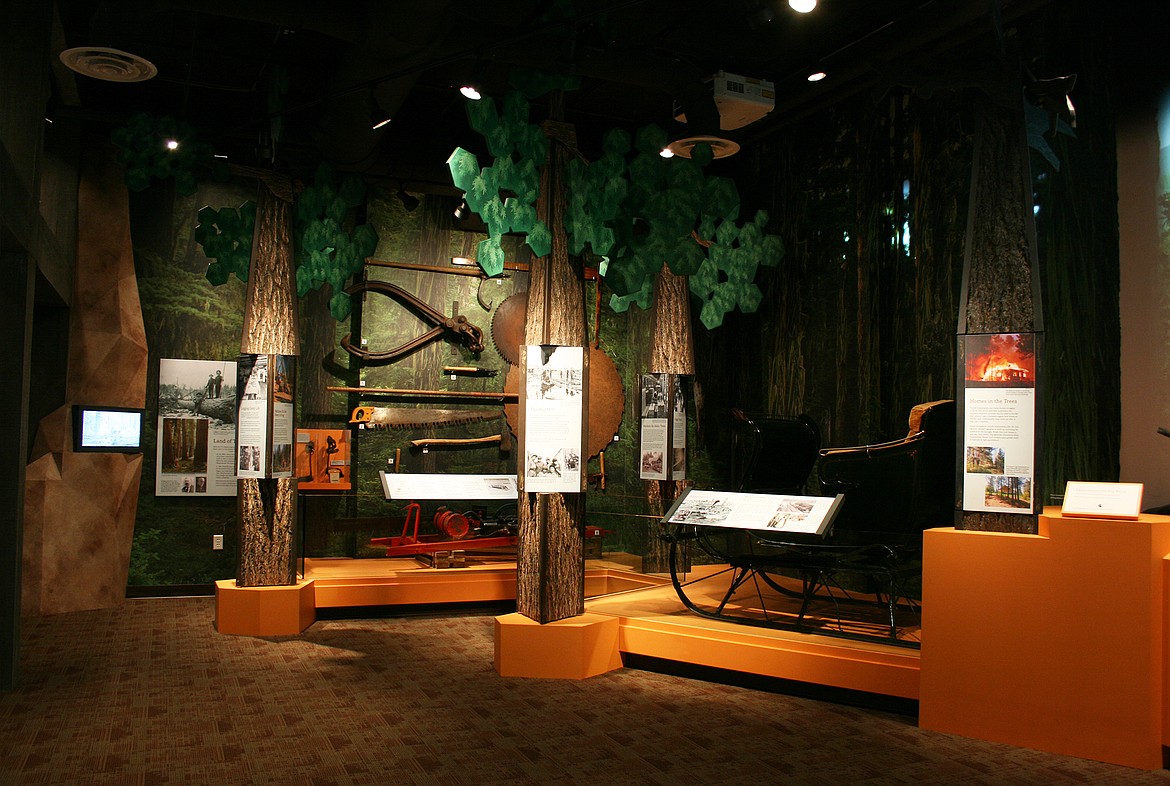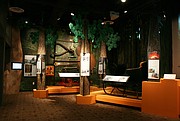Looking ahead to Idaho's past
By CHUCK MALLOY
Special to The Press
BOISE — Those who learned Idaho history in fourth grade might remember hearing something about that 1910 wildfire that reduced much of the state’s Panhandle to ashes. It also may be one of those boring little facts that go through one ear and out the other.
But the remodeled Idaho State Museum in Boise, which opened its doors for a media tour on Thursday, teaches about the fire in a different way. It brings the events of that fateful August day to life on a giant screen. Viewers can see in graphic terms how the fire swept through the area, skipping from one mountainside to another and reducing much of the Idaho Panhandle to ashes.
The 1910 fire is sometimes referred to as the “Big Burn,” and this video shows why.
“When you can see it, you can imagine what it must have been really like,” said Janet Gallimore, executive director of the Idaho State Historical Society.
The Big Burn video isn’t the only North Idaho exhibit that will be on display when the museum opens to the public on Oct. 12. There’s an entire North Idaho gallery, which tells a variety of stories about the history of the region — from the Sunshine Mine disaster to how logging transformed North Idaho’s economy and culture. Visitors can learn about the historical and present-day roles of the Nez Perce, Kootenai and Coeur d’Alene tribes.
That’s just one wing of the museum. There also are galleries for Central Idaho, South Idaho, Eastern Idaho and the Magic Valley. Other highlights include the Origins Gallery, which explains how various landscapes in Idaho were formed, and an animated overview of tribal history.
The museum is a result of collaborative efforts from the Idaho Historical Society, along with a long list of focus groups, scholars and people from all around the Gem State who shared their stories about Idaho’s history.
“The story of our state is our story,” Gallimore said. “We tried to connect the stories of the past with the present — mining, history and the Oregon Trail, so the history is real.”
One of the main objectives, she said, was to ensure that Idaho’s story is told from all regions.
“Our governor asked us on the front end of this process to be sure that everyone across the state felt a part of this museum and that their stories shine,” Gallimore said. “North Idaho was not left out. We call this the Idaho State Museum, so people should realize that it’s about the entire state.”
Educationally, she says, the Idaho museum stands to be a resource for students throughout Idaho and others who want to know more about the state’s history. Economically, the facility is a nice attraction for the nation’s fastest-growing state.
“Boise is in a big boom. Our state is in a big boom, and that is a great thing for us,” Gallimore said.
The Idaho facility has much of the look and feel of the Smithsonian’s American History Museum, though on a much smaller scale. As with the Smithsonian, the Idaho museum has a small area for Idaho first ladies, showing a few inaugural dresses worn. Board members took trips to recently opened museums in Colorado and Seattle to help develop ideas for the Idaho facility.
“We wanted to use the best of the best ideas. You only get the opportunity to do something like this once in every 60 years or so,” Gallimore said.
Unlike the Smithsonian, there will be a small admission charge (starting at $10 for adults). The revamping of the museum cost $8.9 million, and another $8 million was spent on exhibits — $4.3 million of which was raised. The museum’s capital campaign involved more than 500 donors from across Idaho and more than 180 made commitments of $1,000 or more.
“This was the largest capital project we have ever done with our agency,” Gallimore said. “We had gifts as large as $750,000 and as modest as $10.
Discussions about renovating the museum have been in the works for a long time.
“The old museum was a bit out of date and tired,” she said. But a new future was written when a capital campaign was launched in 2014, with large donations coming from the J.A. and Katheryn Albertson Family Foundation and Zions Bank. Other sizeable contributions soon followed.
Gallimore expects 115,000 visitors the first years, with drop-offs expected in subsequent years. But future plans call for travel exhibits, which will go through North Idaho and other parts of the state.





